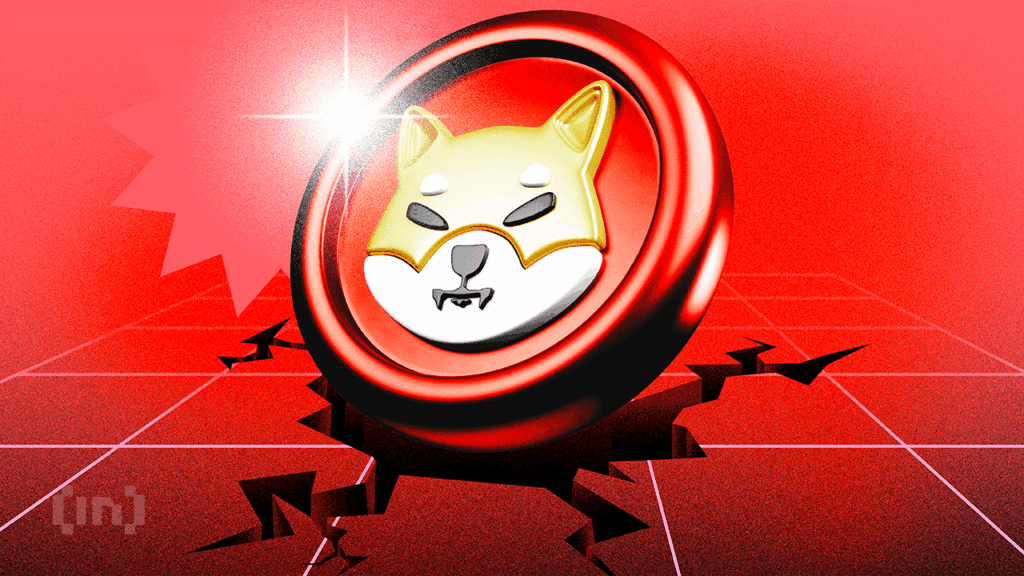The Shiba Inu (SHIB) token has struggled to recover in price, but analysts attribute the failure to underlying structural issues rather than simple market volatility.
This assessment follows a new analysis that declares that SHIB’s goal of reaching the $0.0001 price level is a “dead-end road” given the token’s core flaws.
sponsored
Structural challenges: oversupply and delayed deflation
This grim outlook is underscored by cold, on-chain data. Shibarium’s Total Value Locked (TVL), the company’s Layer 2 solution, has declined, consistently below $1 million since early October, revealing a significant lack of ecosystem utility and adoption.
SHIB faces a core conflict: the mismatch between its large circulating supply and the slow pace of the deflationary mechanism. The SHIB ecosystem is designed to utilize Shibarium, a layer 2 network, to burn tokens and reduce the total supply of approximately 589 trillion tokens.
However, Shibarium’s TVL continues to be low. This is just a glimpse of the network’s theoretical possibilities. Therefore, the token burn rate is significantly lower than market expectations. This stagnation suggests that development efforts are not leading to meaningful network activity or user adoption.
Given that SHIB’s market cap is still in the billions, a TVL below $1 million is a clear indicator that decentralized applications (dApps) and users are not embracing the chain at the scale needed.
sponsored
Analysts interpret this technical flaw as the main structural reason. They increasingly believe that ambitious price targets like 0.0001 are unrealistic. The sheer size of the token supply requires massive and sustained deflationary pressure, which the current ecosystem cannot provide.
Public works deficits and capital flight to AI/DePIN
A secondary and important factor driving SHIB’s struggles is the ongoing capital turnover within the crypto market. This capital is directed toward areas that provide tangible utility. As the broader trends in Web3 decisively shift from “memes” to “utilities,” SHIB is losing ground to projects that provide real-world value.
In late 2025, capital favored sectors such as AI computing (e.g. Bitfarms’ pivot) and DePIN, projects that generate revenue from data, computing, and enterprise efficiency. These utility-driven tokens offer clear fundamentals beyond speculation.
sponsored
Conversely, SHIB has struggled to shake off its “meme coin” image. The lack of TVL confirms that Shibarium has not found a unique and compelling use case. This is necessary to attract developers and users from established Layer 2 networks.
Persistent utility deficits mean whales and smart capital investors are opting to exit SHIB and direct their funds to sectors centered around these high-growth utilities.
Community resilience and the competitive environment
Despite long-term structural challenges, community efforts are demonstrating resilience. Data released yesterday shows that SHIB token burn has surged over 42,000% in the past 24 hours, with the price rising slightly to $0.00001062.
sponsored
Capital flight is not limited to utility tokens. It also targets alternative meme projects that promise positive tokenomics. “Smart companies are rotating to Shib on Base,” one prominent figure noted at X, citing 32.6% supply burn and “AI-driven utilities” as key factors.
This vigorous competition highlights that investors are now actively seeking faster write mechanisms and verifiable utility. This puts the original SHIB project in competition with AI tokens and newer, more aggressive meme coin models.
For SHIB to remain relevant and pursue price recovery, its team must urgently demonstrate measurable, innovative utility. This requires more than just advertising in the community. In return, we need to attract significant liquidity and developer involvement into Shibarium. This action ultimately proves that tokens serve as an essential part of the Web3 infrastructure.
Restoration of Sibrium’s TVL is the first signal necessary for SHIB to be freed from its structural constraints.


